No-Knead Bread, One Year Late (Plus, How to Make Your Own Butter)
About a year ago, a phenomenon swept through the food blog world : with a little planning and an enameled cast iron Dutch oven, the novice baker could make a nice crusty loaf without kneading the bread. Without shaping the loaf. Without doing much of anything, really. It was a supposedly foolproof bread recipe for the laziest of amateur bakers, and countless food blog posts confirmed the consistent success of this technique.
I'm not really a joiner, and planning ahead is something I seem metaphysically incapable of. Therefore, I never got around to making this famous no-knead bread, which requires 18 hours of advance planning.
However, last weekend we had some guests over with ostentatious plans to cook a whole ham. In this spirit of absurdity, it somehow seemed appropriate to bake a loaf of bread—my first ever.
And since a million people have written about the no-knead bread, I went a step further. Thanks to an anonymous comment on Nick's post about local butter , I was directed to a New York Times article that described the disarmingly easy process of creating one's own butter. Being peculiarly susceptible to any cooking experience like this--going back to the genesis of any thing's origin, exploring techniques lost to industrial food production or modern convenience--it became clear: we would make our own bread and butter.
The result was a house full of the smell of baking bread as our friends Tory and Matt arrived for the ham. Once Tory had unpacked a bag full of meats, cheeses, nuts, dried fruit and some kind of quince paste which tasted like thick fruit leather--but fancy--we announced the first order of the evening: making butter.
They looked unsure but admirably hopeful: would we be eating anytime before midnight? I could understand their trepidation, their visions of a long night of churning during which we’d work for our food. But actually, butter doesn't take very long at all. In the very simple style that we made it, in fact, only about ten minutes.
And the bread was good, far better than I imagined my first loaf of bread would be. It needs some tweaking—I think slightly longer in the oven, perhaps a bit more yeast for flavor. But there you have it. From a pile of flour, a packet of yeast, salt, and some cream, we ended up with a crusty loaf of bread and accompanying butter. And for a lot cheaper than you'd pay at a store. Details and recipes after the jump.
The Bread
- 3 cups all-purpose or bread flour, plus more for dusting
- ¼ teaspoon instant (rapid-rising) yeast
- 1¼ teaspoons salt
- 1 5/8 cups water
First, you mix the dry ingredients which included rapid-rising yeast, the kind, I learned, that you can mix in with dry ingredients without the need to dissolve in warm water first.
To that you add the water slowly, mix until just combined into a shaggy dough, then cover and leave in a warm-ish place for 12-18 hours. In this case, with the temperature just dropping and our heat not yet turned on, in the bathroom with a portable heater.
We checked about 18 hours later and it had developed lots of bubbles on the top, which the recipe says will happen. Next, you flour it a bit and fold it over itself once or twice, then let it rest for an additional 15
minutes, loosely covered.
Then, you take two kitchen towels that won't shed--avoid terry cloth--and flour them well. Take the dough and quickly shape it into a ball. Put the dough on one towel, cover loosely with the other, and return to the warm place to rise for two hours. It is supposed to double in size in that time. (We went to a friend's house for enchiladas and coffee).
With half hour or so remaining in the rising time, put a dutch oven into your regular oven and preheat to 450 degrees. Before you do, if yours has a black plastic handle like mine, remove it by unscrewing, as they're only safe up to 400 degrees.
Once it's had the chance to heat thoroughly for half hour or so, it comes out of the oven for just long enough to scoop the dough in--not an easy process. Ours stuck but eventually cooperated.
If it looks sloppy in the pot, it's okay. This is unusually wet dough, which is why the recipe works so well--once you put the dutch oven back in with the top on, the bread kind of steams itself, which imitates very expensive steam-injected ovens that bakeries use.
After 30 minutes, remove the top and let the bread brown for another 15-30.
The Butter
- 6 cups heavy cream, the nicest you can fine (organic, grass fed, etc.)
- Salt, if desired
Leave the cream out on the counter for awhile until it's about halfway warmed up (the recipe at the Times says 50 degrees). Put it in a bowl (or into the bowl of a standup mixer) and cover loosely with plastic wrap. Mix at medium-high speed as if you were making whipped cream.
Eventually, the color will become more yellow. If you whip a lot of cream, your instincts may kick in telling you to stop before it separates--but press on, because the point is to overwhip the cream. Eventually, the agitation breaks down some of the molecules and allows the fat molecules to bind to each other, or something like that. At some point, the consistency of what you're mixing will suddenly change. There will be little globules of yellow suspended in a whitish liquid. This is the beginnings of separation, the butter from the buttermilk. As Harold McGee quotes the poet Seamus Heaney , "Finally gold flecks / began to dance... a yellow curd was weighting the churned-up white, / heavy and rich, coagulated sunlight."
Stop mixing a few seconds after this happens, then strain out as much of the buttermilk into a container as possible.
Scoop up what's solid in your hands and rinse it off.
Next comes the kneading. Dig your hands in--your impeccably clean hands, as Julia Child would say. Work out any pockets of butter milk, and drain out more liquid periodically.
And eventually, you'll have butter.
It can be salted if you wish, which may actually be a good idea in this case--butter made this way from pasteurized fresh cream is not the most complex-tasting concoction. It's sweet and creamy, but slightly flat. I've been reading extensively about making butter since, and apparently there are ways to introduce lactic acid bacteria (either artificially or by letting the cream sit for awhile at room temperature--how to do that safely?) into the cream, which results in a fuller taste. Does anyone have experience doing this? I'd like to experiment with my next batch. Please share in the comments.
Bread, Bread, Butter, Heavy Cream, No-Knead Bread

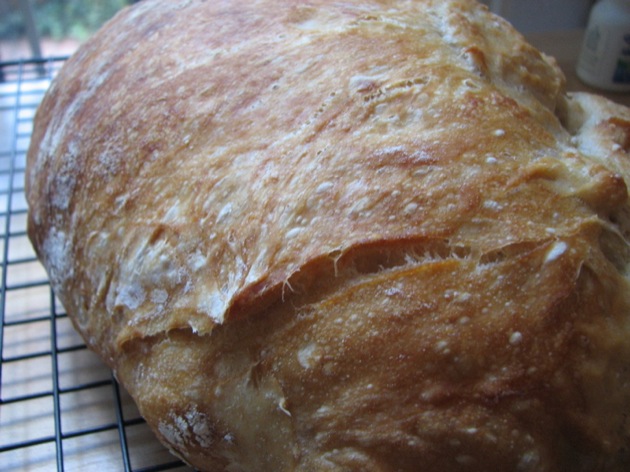
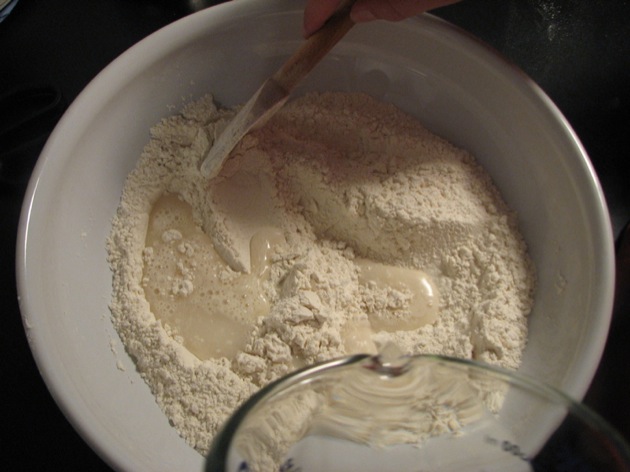
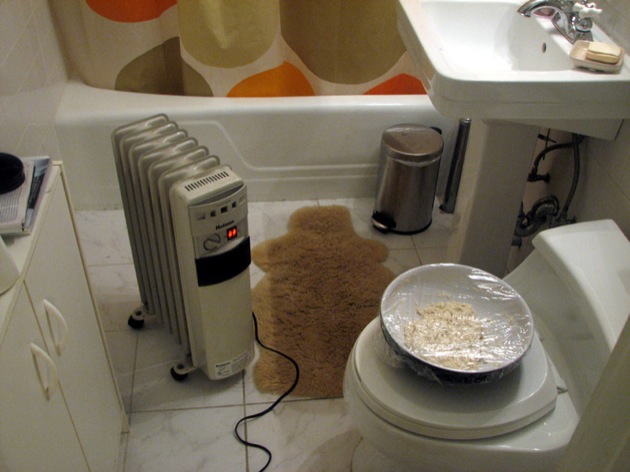
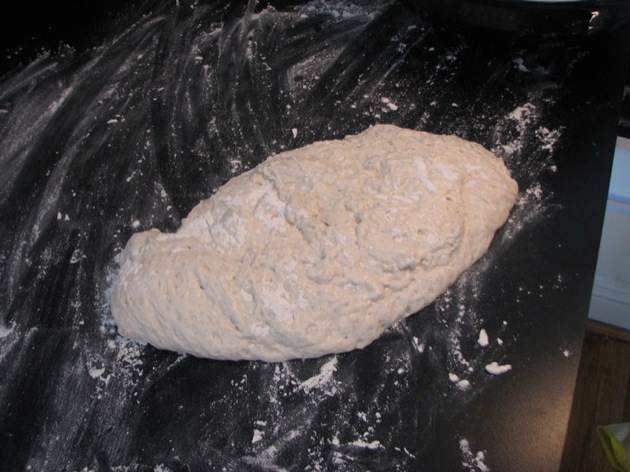
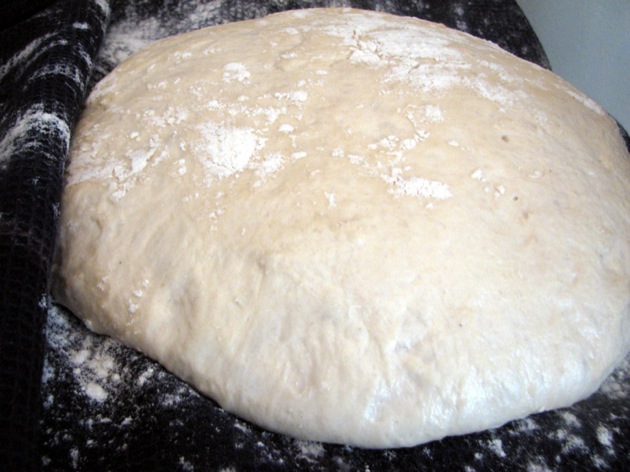
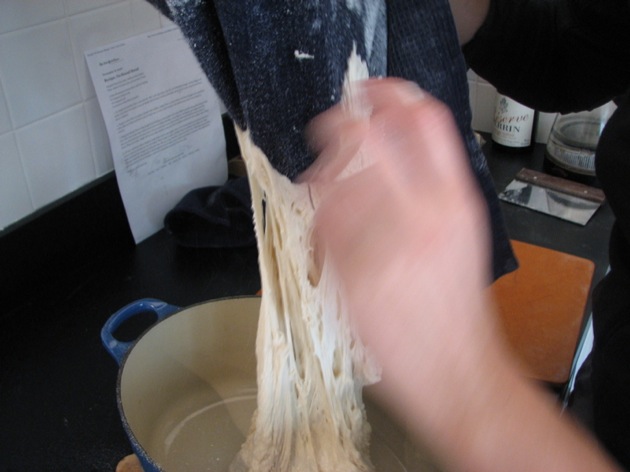
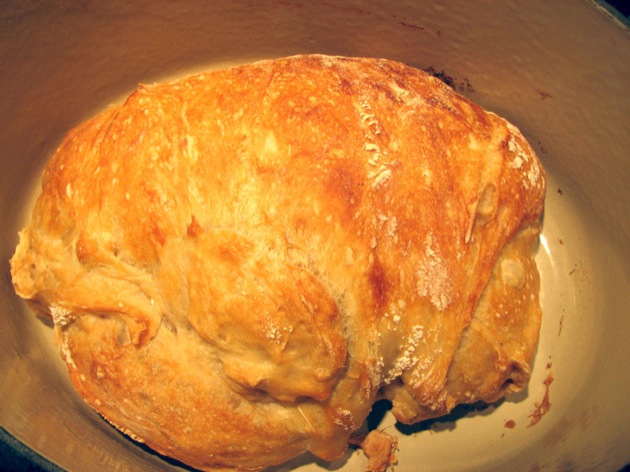
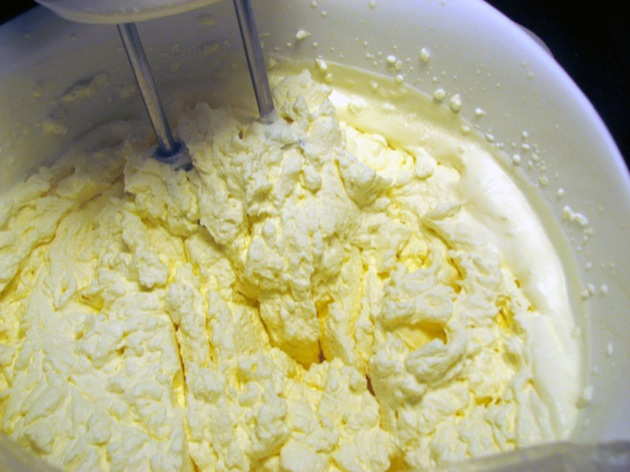
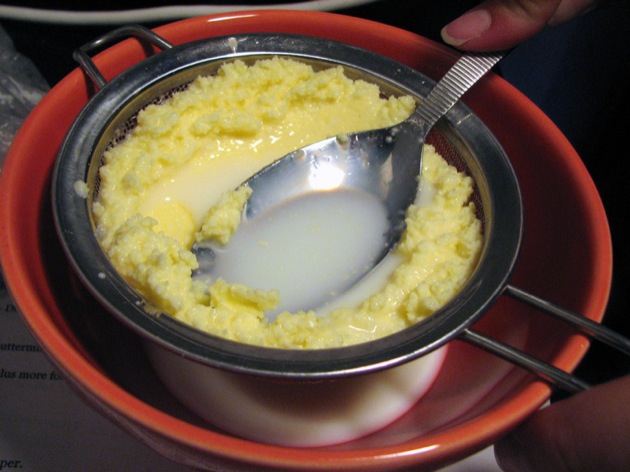
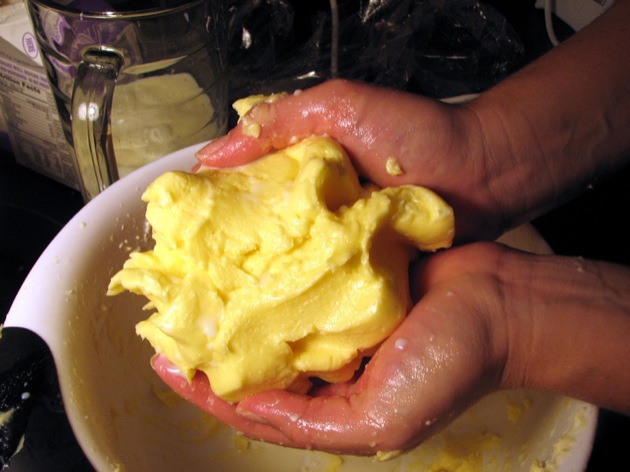
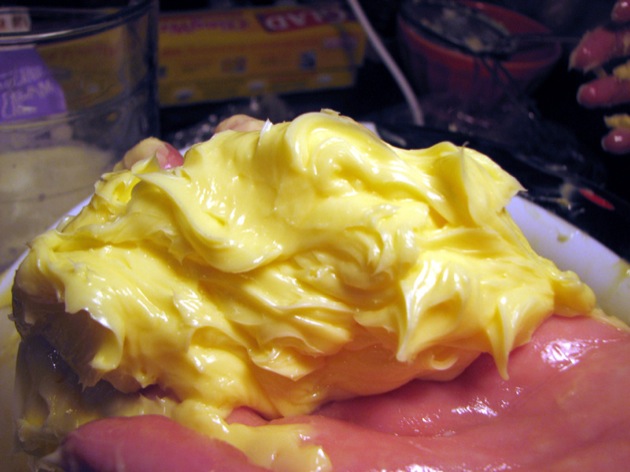
Comments:
Blog Comments powered by Disqus.